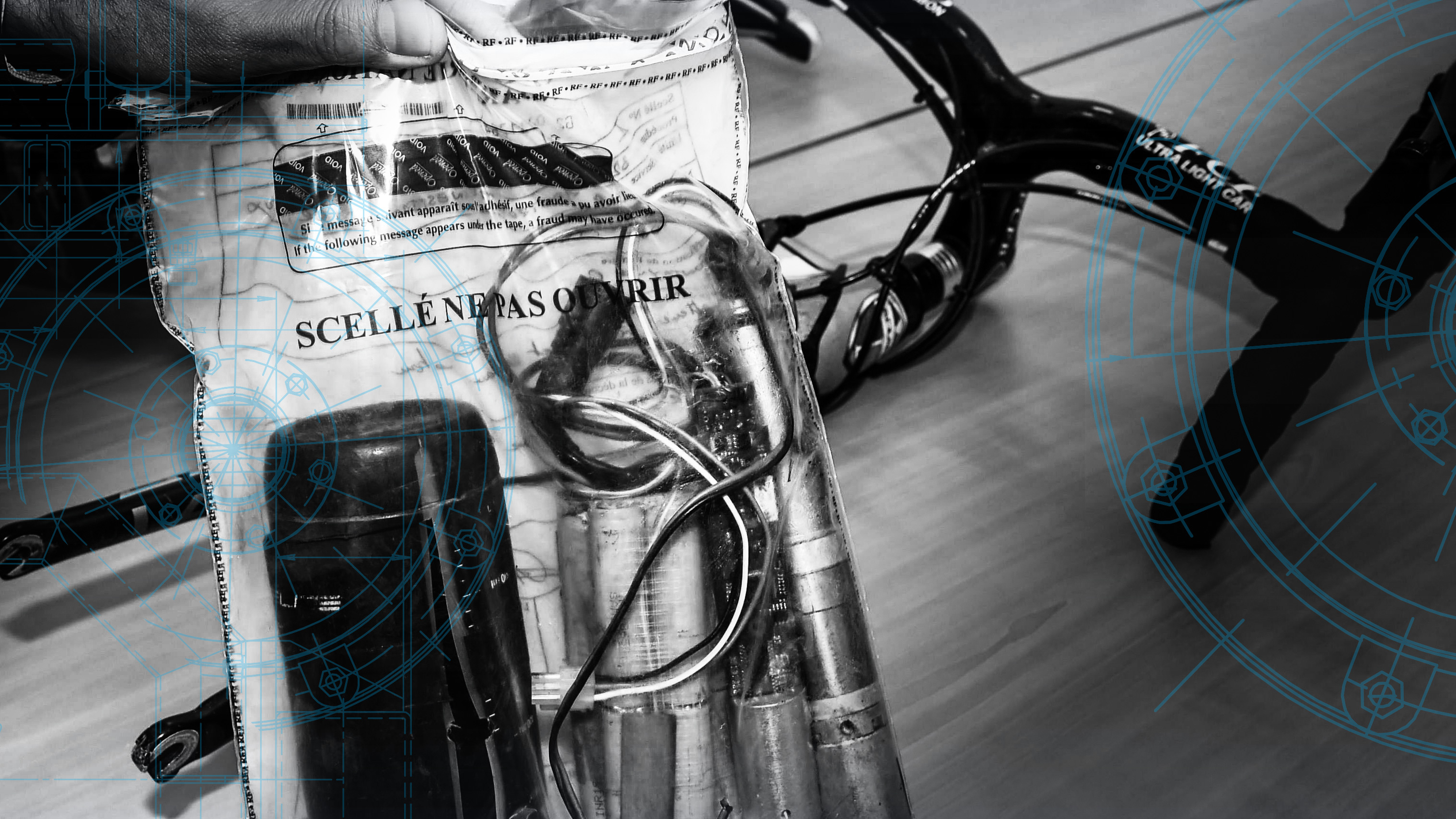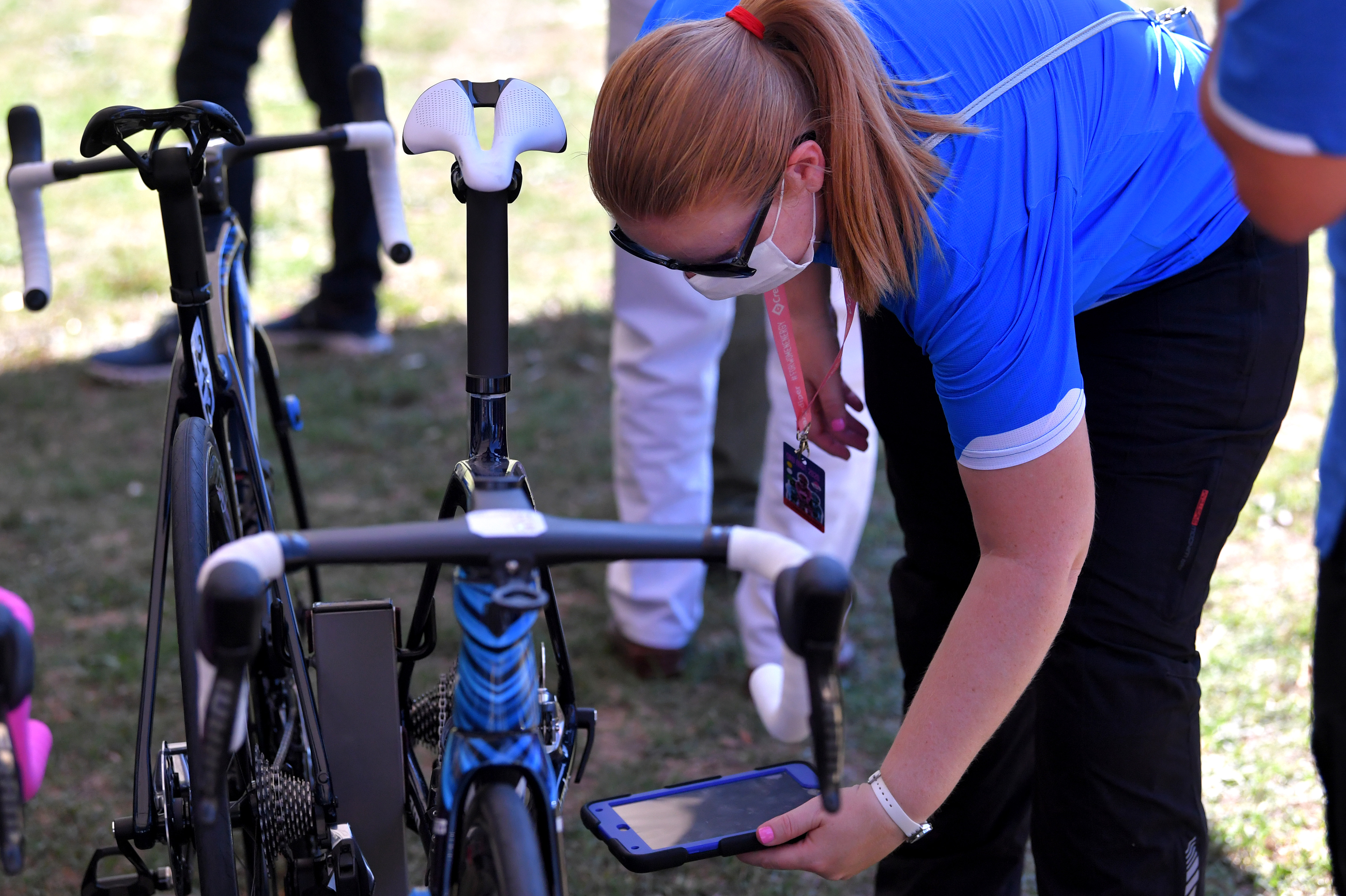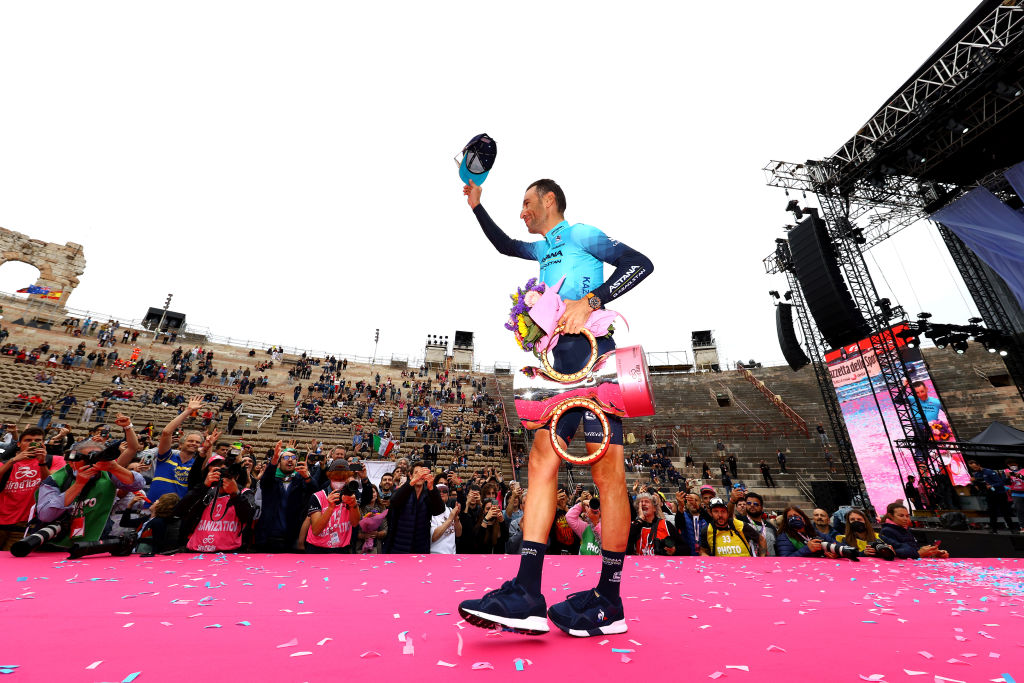Will we ever find out the 'truth' about motor doping?
Cyclingnews investigates whether motor doping has ever graced the pro peloton, and if so, is the UCI actually able to do anything about it?

It’s one of cycling’s greatest mysteries – or conspiracies, depending on who or what you believe: have professional cycling races been won with concealed motors?
The most high-profile accusations of motor-doping at some of the sport's biggest events happened between 2010 and 2014, in which you will be well-versed. They are among many unproven and strenuously denied allegations, but they are rumours that have only had their fans flamed by the fact that the UCI, cycling’s world governing body, didn’t have any specific tests in place to detect motors until January 2016 (save for the odd roll out of an x-ray machine and occasional dismantling of bikes), meaning riders could have had motorised assistance without fear of such cheating being uncovered.
But no one, except the young Belgian cyclocross rider Femke Van den Driessche in 2016 – coincidently or not, on the first day the UCI introduced a magnetic scanner that is still in use today – has ever been caught with a motor in their bike.
For the past two years, I have been investigating technological fraud – or motor doping, as the topic is commonly referred to – and in early 2024 I, alongside podcast company Stak, released Ghost in the Machine, a seven-part podcast documentary examining the issue. Among many things that I’ve learned, the most striking is that, though not everyone will admit it for fear of reproach, there is near-universal acceptance within the sport that motor doping was happening more widely pre-2016; Van den Driessche was not the only one – she was just the unlucky one to be caught. A scapegoat, some say.
Which begs the question: will we ever find out the ‘truth’ about past motor doping? And is the UCI, despite giving “carte blanche” to the American former criminal investigator Nick Raudenski, the man responsible for dealing with the threat since May, really willing to dig up the past and potentially unresolved trauma?

Hard evidence, hearsay, or both?
You’re probably wondering: what makes me so certain that motors were used in the past? Without conclusive evidence or whistleblowers' testimonies, surely I’m just another conspiracist. My conviction stems from the countless conversations I continue to have with people in the sport, allied to double- and triple-sourced anecdotes and videos shared with me which appear to point towards possible past motor doping. I don’t have a smoking gun, but I am in possession of a lot of circumstantial evidence, covering the late 1990s to as recently as the 2024 season.
And speak to anyone in the sport, and no one can confidently say that the whole thing is a big myth; to the contrary, in fact. “Motor in the bike was not a big thing, but there were more rumours in the past, like five, six, 10 years ago,” Tadej Pogačar told me last December, hinting at the period when suspicions were most prominent. In the mid-2010s that Pogačar referred to, Jean-Pierre Verdy, the founder of the French Anti-Doping Agency, famously said 12 riders had a motor in the 2015 Tour de France during an interview with US television show CBS '60 Minutes', while former Italian rider Davide Cassani claimed that some riders were using motors as far back as 2004. No evidence, however, has ever been forthcoming.
Sign up to the Musette - our subscriber-only newsletter
At the time of Van den Driessche’s sanction in 2016, the president of the sport was Brian Cookson. “It’s hard to deny that there were some inexplicable things in certain performances,” the Englishman told me recently. “I don’t have any evidence to support anything that could be counted as solid proof… and the fact remains that no one has been caught other than the first case when we developed a method of testing that was practical enough to use regularly. But were there people before? It was less difficult [to get away with it] because there was no particular testing. But if there was some evidence, then we would have acted upon it at the time, and I’m reasonably confident my successor David Lappartient would do the same thing, and that’s why he has increased the tech fraud fight and brought in newer methods of detection.”
Cookson, who succeeded the Irishman Pat McQuaid in 2013, was ousted as the UCI’s president in 2017 largely because of the motor scandal, with Lappartient alleging that Cookson never took the matter seriously. Speaking to me in late May for the Ghost in the Machine podcast, I asked Lappartient if Van den Driessche was the only one to ever be brazen enough to ride with a motor. “The first time we really used these tablets we were able to catch somebody, [but] it doesn’t mean there weren’t other riders using these kinds of things,” the Frenchman said.
Upping the stakes as time runs out
In September, the UCI announced the introduction of a rewards programme, whereby people who provide the governing body with information about hidden propulsion methods could be given a financial or material reward in return. “This initiative aims to… encourage persons who would otherwise not voluntarily come forward and/or provide the UCI with critical information about technological fraud,” the governing body said in a statement. This form of incentivisation was the biggest public indicator yet of what multiple UCI sources have been telling me in the past few years: the organisation seriously believes that motors were and could still be afflicting the sport.
If evidence came to light of mechanical fraud from the early 2010s, or at any other point in the past few decades, what would Lappartient do? “If we have information about facts in the past, we will also investigate,” he said. “At a mass participation [amateur] level, it is sure that this has probably happened. At the highest level, I don’t know. I want to be an institution that knows whether it’s black or white, so my job is to focus on the future and also any information we have from the past we will take it [forward] also.”
While Raudenski was firmer on the point, adding: "In the fight against technological fraud, it is clear that we must navigate challenges from the past while progressing forward. We are concerned by each and every allegation of technological fraud and our position is firm, whether the cases are past or present, our mandate is to prove innocence, disprove allegations, and pursue further investigations when necessary, in order to guarantee the credibility and fairness of our sport."
Former staff in Cookson’s administration have told me that the only way to prosecute previous offenders is if a motor is literally found in a bike, and Cookson’s view is not so dissimilar. “You’re going to need very substantial evidence, otherwise they are going to deny it and it’ll be a case of hearsay,” he said. “If they can prove that someone paid someone, then maybe. As they say, follow the money, the paper trail, look for transfers and receipts. But for something clandestine, people will cover everything as much as they can, hide payments or deal in cash transfers.”
The most probable scenario is that a whistleblower emerges – and the rewards scheme was partly designed to encourage such people, should they exist. “If someone has a crisis of consciousness of what they did all those years ago, they might be ashamed of it and it’s weighing on their mind so much that they admit it,” Cookson added. “Would it ever happen? I doubt it, but I’ve been in pro cycling for many, many years and nothing would surprise me.”

In a statement to Cyclingnews, the UCI said of its rewards programme: “Although we cannot discuss specific cases, we can confirm that we continue to receive information through various channels, including the UCI’s SpeakUp platform and directly via TechFraud@uci.ch.”
Three-time Tour de France winner Greg LeMond has been one of the most outspoken voices on the topic, saying recently that “I truly believe motors were used to win a lot of big races.” He has used data, in particular power numbers and high cadence figures, to point towards possible motorised assistance. Though that doesn’t count as proof per se, it does classify as circumstantial evidence.
What could prove a sticking point for the UCI is its own rules. Article 12.4.003 of the UCI regulations states that “technological fraud is subject to a statute of limitation of 10 years from the date of the offence”, the result being that the UCI could not legally bring proceedings against riders/teams for an incident that happened a decade before; the same rule applies when it comes to biological doping cases. So in theory any cheating from the 2013 Tour de France can now not be pursued by the UCI.
“We’re not far off 10 years from 2016 when we introduced these regulations, so anything before then is difficult to prosecute, even if there are witnesses and evidence. I can’t see it being an easy process to sanction someone from the past,” Cookson said. Yet that doesn’t mean the UCI has to take a literal view of its own ruling: though the governing body is technically prohibited from prosecuting cases a decade or more older, it is not prohibited from investigating suspicions.
Optics, integrity, and 'the truth'
As Lappartient said on the podcast, “If we have a case of cheating with a motor in the bike, sorry but it will destroy our sport.” It’s therefore understandable to ask: Why should the UCI and I continue to chase this opinion-splitting topic? “If there is fraud and fixing, the damage could be very substantial, but I would never want to stop anyone investigating something they consider is wrongdoing that took place in our sport,” Cookson said. “We’ve had enough damage over the years to understand the sport needs to have integrity and be believable. But equally, there must come a time when a line should be drawn under that – and I guess that was what was intended by the 10 years statute of limitations.”
It might also be natural for people to assume that with Lappartient being one of seven candidates to become the next International Olympic Committee president in March, a role that would make him the biggest name in sports governance, he would be reluctant to bring a new stain on the sport he has led since 2017 for fear of it negatively affecting his own career aspirations.
But there is another way of looking at it: if the UCI uncovers proof of motor doping before Lappartient’s tenure began, he could claim that he is righting the wrongs of the past, thus seizing the moment to claim that sport, not just cycling, is safer, cleaner and fairer under his watch; the narrative he’d opt for is that he can be relied on to root out corruption and fraud, and that cheaters have nowhere to hide. Additionally, historical cases would be less damaging than current cases – and Lappartient, a media-savvy and career politician, would be aware of such optics. “The worst thing for the institution would be if we are informed of a case of technological fraud and we do nothing,” he said in the summer. “Then of course it will completely not only destroy cycling but the institution itself.”
The message, if you dig beneath the layers and the corporate speak, is actually quite unambiguous: the UCI, led by the well-respected Raudenski, is willing to go after past offenders of motor doping if it has enough evidence, and the information-for-rewards scheme points towards an increased focus on bringing possible past offenders to justice. But Cookson speaks for everyone when he assesses the probability of a smoking gun ever being found. “Whether you or anyone else ever discovers the ‘truth’ about the notorious allegations, I don’t know,” he said. Perhaps we’ll never know. Perhaps motor doping will always remain a mystery, a literal ghost in the machine.
If you subscribe to Cyclingnews, you should sign up for our new subscriber-only newsletter. From exclusive interviews and tech galleries to race analysis and in-depth features, the Musette means you'll never miss out on member-exclusive content. Sign up now
